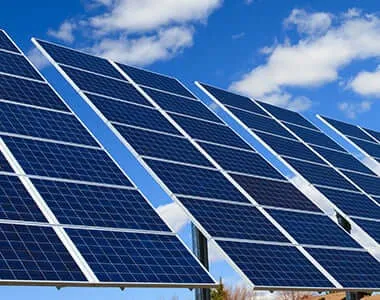3 Phase Solar Hybrid Inverter - Efficient Solar Energy Solutions
Understanding the 3-Phase Solar Hybrid Inverter
In the realm of renewable energy technologies, the solar hybrid inverter stands out as a pivotal component for both residential and commercial applications. Among the various types available, the 3-phase solar hybrid inverter has gained significant popularity due to its impressive efficiency and capability to manage electricity generation and consumption effectively.
What is a 3-Phase Solar Hybrid Inverter?
A 3-phase solar hybrid inverter is a sophisticated device that integrates solar power generation with traditional grid power and battery systems. It functions by converting the direct current (DC) generated by solar panels into alternating current (AC), which is necessary for most household and industrial applications. The 'three-phase' aspect refers to the inverter’s ability to operate with three interconnected AC lines, which is particularly beneficial for balancing loads and reducing voltage fluctuations in larger systems.
Key Benefits
1. Enhanced Efficiency One of the primary advantages of a 3-phase solar hybrid inverter is its efficiency. These inverters are designed to optimize power output by distributing the load evenly across all three phases, which minimizes losses and enhances overall performance. This is particularly advantageous for larger installations, as they can handle more substantial power loads with ease.
2. Improved Stability The three-phase system supports better stability and reliability of the power supply. It can significantly reduce the risk of overloads and ensures that power is consistently available, even when demand fluctuates. This makes it ideal for industrial applications that require uninterrupted power supply.
3 phase solar hybrid inverter

3. Battery Integration A hybrid inverter allows for seamless integration with battery storage systems. This capability is essential as it enables consumers to store excess solar energy generated during the day and utilize it during periods of low sunlight or at night. This feature not only maximizes the use of renewable energy but also provides a backup power solution during grid outages.
4. Grid Interaction In addition to harnessing solar energy, a 3-phase hybrid inverter can interact with the grid, allowing users to sell surplus energy back to the grid or draw power when solar generation is insufficient. This bidirectional capability enhances energy management and can lead to cost savings on electricity bills.
5. Smart Technology Many modern 3-phase solar hybrid inverters come equipped with smart technology features, such as remote monitoring and control. Users can track their energy production and consumption through mobile applications, enabling them to make informed decisions regarding their energy usage.
Applications
3-phase solar hybrid inverters are particularly well-suited for commercial establishments, such as shopping malls, manufacturing plants, and office complexes, where the energy demands are higher. Additionally, they can be effectively employed in large residential setups where increased energy efficiency and reliability are paramount.
Conclusion
As the world shifts towards greener energy solutions, the 3-phase solar hybrid inverter emerges as a fundamental technology in the transition to sustainable living. Its ability to harness solar energy efficiently, coupled with advanced features for battery integration and grid interaction, makes it an invaluable asset for managing energy consumption. With the ongoing advancements in solar technology, the future looks bright for those adopting 3-phase solar hybrid systems, contributing not only to lower utility costs but also to a cleaner, greener planet.
-
Unlocking Energy Freedom with the Off Grid Solar InverterNewsJun.06,2025
-
Unlock More Solar Power with a High-Efficiency Bifacial Solar PanelNewsJun.06,2025
-
Power Your Future with High-Efficiency Monocrystalline Solar PanelsNewsJun.06,2025
-
Next-Gen Solar Power Starts with Micro Solar InvertersNewsJun.06,2025
-
Harnessing Peak Efficiency with the On Grid Solar InverterNewsJun.06,2025
-
Discover Unmatched Efficiency with the Latest String Solar InverterNewsJun.06,2025







